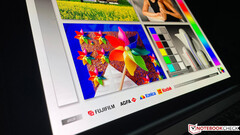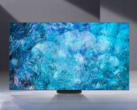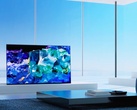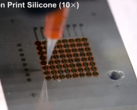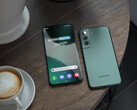The OLED displays' lifespan still leaves a lot to be desired in comparison with other screen technologies on account of the pesky blue diodes which sport materials with much shorter working periods before deterioration. In the beginning, this led to the dreaded burn-in problem, and, while today's panels have improved in that regard, their imaging quality can still degrade much faster than, say, on LCD screens. There are a number of ways to tackle the issue, as more and more electronic devices, or even cars, are now sporting OLED panels with increased longevity requirements. One possible way to remedy the problem is to use the dual-stack OLED screen technology, while another deals with the lifespan of blue diodes directly.
A Korean startup, Rodin, has managed to create a new material for the blue diodes that they say increases their luminous efficiency to more than 90% compared to 25% in OLED displays currently on the market. The company will publish their patent later this year, and will be ready to commercialize the new blue diode material for TVs, laptops, or phones, in 2024. Currently, blue OLEDs only use fluorescent materials that is capable of the so-called "singlet exciton" or excitation of a single electron, whereas the red and green diode materials allow both single and triple excitons. Rodin's new blue OLED phosphorescent material can also do what the reds and greens do, hence exhibiting higher luminous efficiency and a lifespan on par with the other diode colors which will in turn bring a much longer usage before any visible image quality deterioration.
The dual-stack production method is another way to achieve OLED panel longevity, in this case of more than a decade, and LG already uses it to make the Mercedes-Benz EQS Hyperscreen, for instance. Not to be left behind, Samsung is working towards developing dual-stack OLED screens, too, and, seemingly, so are the Chinese panel makers like BOE. Korean media is reporting that Honor has approached BOE to source dual-stack OLED panels for a foldable phone that may be released later this year. Instead of developing LTPO display technology like the one in the current Galaxy S22 Ultra or iPhone 13 Pro series that allows for high refresh rates and lower power consumption, BOE is said to jump directly to the dual-layer method.
By stacking two OLED display layers, the technology prolongs the lifespan of the panel significantly and increases its peak brightness, but also brings a drastic 30% decrease in its power draw, compared to the 10-15% decrease of LTPO panels. Given that the display is the main energy consumer in portable electronic devices, the dual-stack OLEDs could significantly increase the battery life of the gear equipped with them, too. With LG, Samsung, and BOE - the three main OLED screen suppliers - all working on dual-stack designs, and the new blue diode materials to be commercialized in due course, 2024 may bring a display technology revolution on par with the switch from LCD to OLED screens.
Get the Lenovo IdeaPad Slim 7 Carbon 14" 2.8K OLED Touchscreen laptop on Amazon




